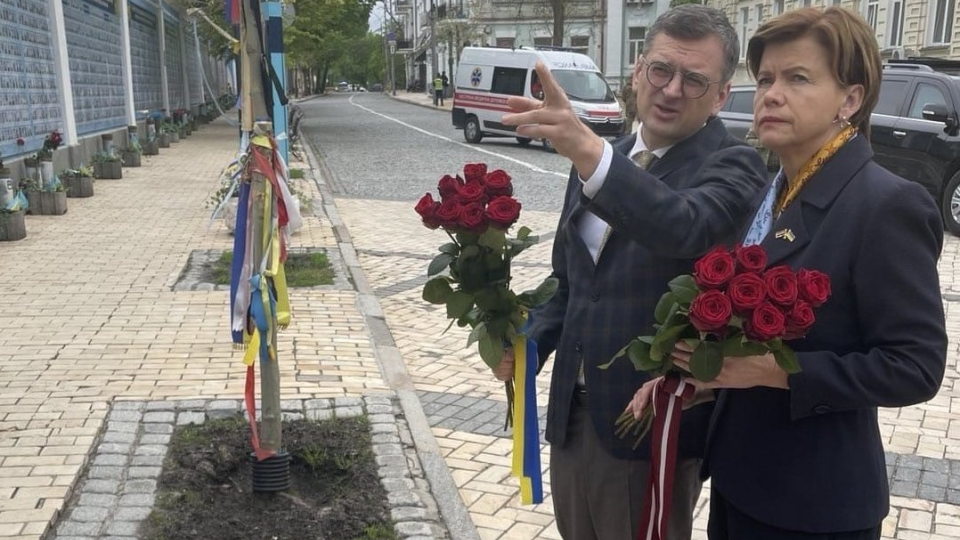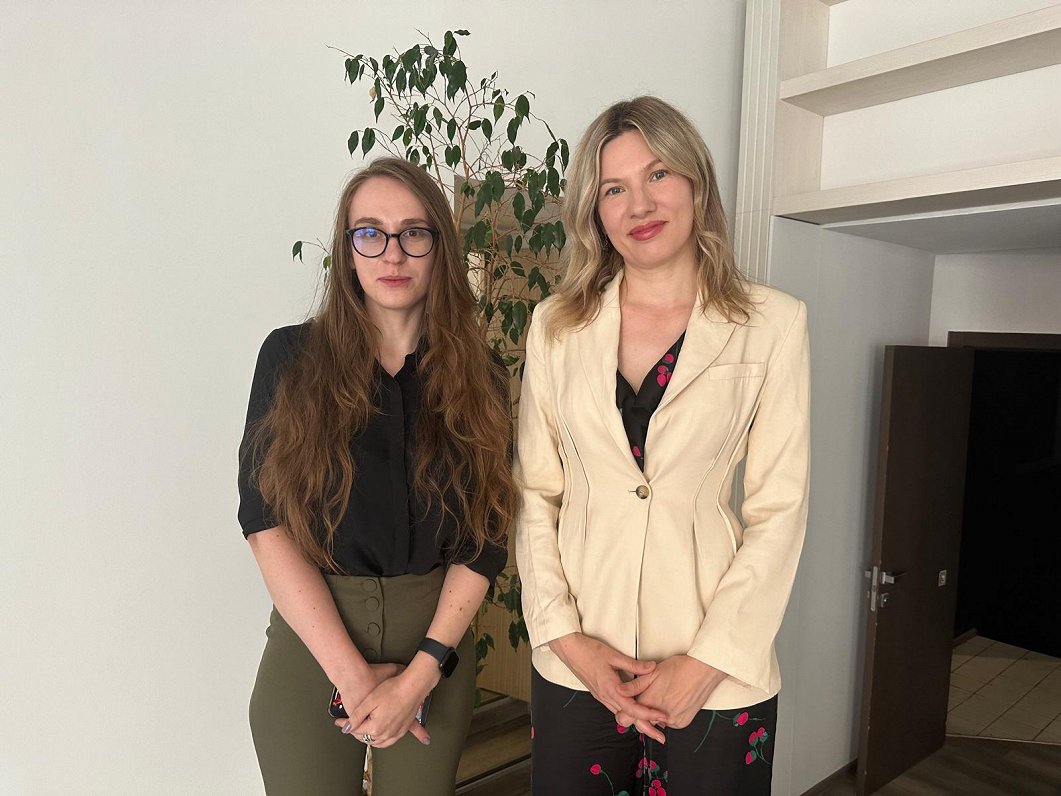Since the beginning of the full-scale Russian invasion, there has not been a day without attacks on Ukrainian cities and towns. July of this year has been the deadliest month for Ukrainian civilians since October 2022, according to the United Nations (UN).
219 civilians were killed in one month alone. The most devastating attacks are the consequences of Russian missiles, "Shahed" combat drones from Iran and guided aerial bomb attacks (glide bombs). Despite the sanctions imposed by Europe, the USA and other countries, Russia still manages to obtain raw materials for its weapons.
Components from Western countries are found in Russian weapons
In a quiet office in the center of Kyiv, Latvian Radio met with Olena Tregub, executive director of the Independent Anti-Corruption Commission, known in Ukraine by the abbreviation 'NAKO'. The organization she represents works with Ukraine's defense industry and studies debris from Russian missiles, drones and other weapons that land in Ukraine or are captured.
"We were the first organization to have access to Iran's Shahed drones, and we did a joint study with The Wall Street Journal in November 2022 that showed 80% of the electronics in Iran's Shahed drones were of US origin. At the time, it was sensational information. After that, we continued our research, we studied a lot of weapons – high-precision weapons, missiles, drones, helicopters, missile launch systems – and in fact the conclusion is this: Russia relies, still, on Western technologies or Western cooperation partners, for example Japan and Taiwan," says Tregub.
When asked whether the number of sanctioned parts in Russian weapons has decreased or increased in the last two years, Tregub, referring to a study by the Kyiv School of Economics, answered that the number of these components decreased by only 9% in two and a half years.
Another recent study showed that missiles and drones used by Russia to attack Ukraine contain components from more than 20 countries including China, Germany, Japan, the Netherlands, Switzerland, Taiwan, the United States, Canada, and Iran.
NAKO senior researcher Viktoriia Vyshnivska adds that it is difficult to describe the exact picture at the moment, because there are no data for this year. However, last year, in general, a decrease could be seen after the change in the US policy on the supply of certain goods to Russia.
Most western components are in aircraft. NAKO studied the composition of six different Russian aircraft and concluded that SU-35 and SU-34 fighter jets have the most components – over a thousand – from Western countries.
Victoria, Olena and their other colleagues work closely with foreign partners to patch holes in the sanctions regime, including businessmen who supply raw materials to Russia's military industry.
Sanctioned goods through the Baltic States
In Europe, Switzerland and Hungary are the biggest challenges. But what is happening in the Baltics has attracted the attention of NAKO, despite the Baltics' staunch support for Ukraine.
"There is a problem on the side you come from," Vyshnivska told Latvian Radio correspondent Indra Sprance. "The problem is from the point of view of proximity to Russia and, accordingly, deliveries through Latvia, Lithuania and Estonia."
Vyshnivska said that her organization has observed for at least a year how various microelectronics and other components are brought to Russia directly through companies located in the Baltics. In addition, these microelectronics can be used in the production of weapons.
"If I remember correctly, these microelectronics, which were delivered through the Baltics, even went directly to several companies involved in the production of weapons," she said.
How to evaluate the effectiveness of the sanctions against Russia on a ten-point scale? Tregub said that she and the organization she represents are most interested in sanctions aimed at Russia's ability to develop its military war machine and produce weapons.
"These sanctions are related to the technologies we are talking about today. These sanctions are related to the critical sphere – such as oil gas, LNG terminals and financial sanctions. These sanctions... I would rate maybe five points [out of ten]. That's how I would rate it," she said. Tregub's colleague had similar thoughts.
"Let's add the obvious here, that the fact itself – that Russia is demanding the lifting of these sanctions – already means something, so there is a certain effect. So we can say five [out of ten]," assessed Vyshnivska.
Different approaches to European sanctions against Russia
The relatively new Foreign Minister of Latvia, Baiba Braže, has called for increasing the pressure of sanctions on Russia, at least at the political level, and this is highly appreciated in Ukraine.

"I am also grateful to Baiba for the fact that, right after being confirmed as a minister, while participating in the first meeting of the European Union's foreign ministers, she paid special attention to the need to strengthen the pressure of sanctions against Russia. It is indeed a topical subject," stressed Ukrainian Foreign Minister Dmytro Kuleba after an early meeting with Braže. At that time, immediately after being confirmed in office, she went on her first bilateral visit to the capital of Ukraine, Kyiv.
NAKO: Ukrainians tired but determined to defend democracy
"The war is very tiring for Ukrainians. We as an organization, a think tank, are trying to help our country defend itself so that democracy wins," said Olena Tregub, executive director of NAKO.
"Of course, there is a lot of fatigue when we see that there is no direct effect of our work or that this effect is small. Similarly, Ukrainians who are fighting on the battlefield are very tired, because it seems that there is no end to this war," says the representative of NAKO.
"But despite this, all Ukrainians – both those who are at war and those who work in the country – understand that the country has no other choice but to continue the fight and repulse Russian aggression. Otherwise, our country will cease to exist. Therefore, even if we see that the effect is very small, Ukrainians will continue to work like in the story about the frog who churned milk in a milk jug until it churned the butter and jumped out of the jug. This example is about how Ukrainians feel," Tregub emphasized.
"Fortunately for us, there are many such frogs," added Vyshnivska.




























